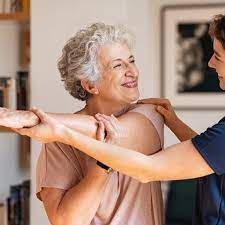Creating Inclusive NDIS Social Groups That Make a Real Difference
Some of the most powerful connections in life are made not through formal services or therapy—but through laughter over lunch, group dance sessions, or shared victories in a game of footy. For Australians living with a disability, NDIS social groups are more than just recreational—they’re a vital part of community inclusion, mental health, and life satisfaction.
But behind every successful group program is thoughtful planning. So how do you design a social activity that’s genuinely fun, safe, inclusive, and empowering?
Let’s break it down.
Why NDIS Social Groups Matter
Social connection is a core human need. Yet for people with disability, isolation remains a common and serious issue. Group-based supports, often funded through the NDIS, offer a space to build confidence, develop friendships, and try new things in a supportive environment.
Whether it’s weekend outings, creative workshops, or regular meetups, ndis social groups help participants:
- Strengthen communication and interpersonal skills
- Experience independence in a safe setting
- Improve emotional wellbeing
- Learn through experience (rather than formal instruction)
A well-run group can transform how someone sees themselves and the world around them.
Step 1: Centre It on Participant Choice
The best social programs aren’t built for participants—they’re built with them.
Start by gathering input from potential group members. What are their interests? Do they prefer indoor or outdoor activities? How do they like to socialise—quiet chats, physical movement, shared projects?
Using person-centred planning principles ensures that the activity meets real interests and goals, increasing engagement and satisfaction.
Examples of participant-led group ideas:
- A weekly cooking and culture night
- Photography walks through local parks
- “Build a band” jam sessions
- Friday night movie club with sensory-friendly features
Participants are more likely to attend regularly—and grow in confidence—when they’ve helped shape the group.
Step 2: Consider Accessibility from the Start
Inclusivity isn’t just a nice-to-have—it’s essential.
When planning social activities under the ndis social groups model, you need to factor in a wide range of accessibility needs from day one. That includes:
- Physical accessibility: ramps, toilets, transport options
- Communication needs: use of plain English, visual schedules, AAC tools
- Sensory preferences: noise levels, lighting, crowd size
- Support ratios: ensuring enough trained staff are available
- Flexibility: allowing participants to opt in or out without pressure
Tools like the Access and Inclusion Index by the Australian Network on Disability can help you benchmark your planning.
Step 3: Mix Routine with Variety
Social groups thrive on structure—but too much repetition can lead to disengagement. The goal is to strike a balance between predictability and fresh experiences.
A good rule of thumb: maintain a regular schedule (e.g. Wednesday afternoons) with a loose structure (e.g. activity + snack + chat), but change up the themes weekly or monthly.
Example:
A weekly art club might rotate through painting, sculpture, collage, and visiting a local gallery every fourth session.
This kind of planning makes it easier for participants to feel prepared while keeping things exciting.
Step 4: Build in Time for Reflection
One of the most overlooked aspects of running a social group is making space for participants to reflect on their experiences.
After each session, ask open-ended questions:
- “What did you enjoy today?”
- “What would you like to do differently next time?”
- “How did today make you feel?”
You can do this verbally, with pictures, or using short feedback forms—whatever suits the group best.
Reflection helps participants consolidate their learning, feel heard, and shape the program going forward.
It also gives facilitators valuable insight to continually improve the program and make it more person-centred.
Step 5: Collaborate with Trusted Community Partners
Some of the best social groups happen when organisations partner up.
Libraries, community gardens, sports clubs, and arts centres often welcome collaborations—especially when they align with social inclusion goals.
This doesn’t just expand the group’s options. It also helps participants engage with the broader community in a meaningful, supported way.
Want to see how organisations are currently offering real-life programs across Victoria and beyond? Explore live examples of ndis social groups being delivered with purpose, creativity and care.
Real-World Example: “Thursdays in the Kitchen”
In Melbourne’s outer suburbs, one NDIS-funded social group meets weekly in a neighbourhood centre kitchen. The session starts with a shared recipe planning discussion—everyone’s input is encouraged, whether verbally or through pictures. Then, participants cook a meal together, taking turns leading each step. They set the table, enjoy the food, and finish with a group debrief.
The program ticks all the boxes: choice and control, skill-building, social connection, and of course, good food.
It’s simple, low-cost, and deeply effective.
Wrapping Up: Social Groups That Spark Real Change
NDIS social groups aren’t just another checkbox in a support plan. Done right, they can be the highlight of someone’s week—and a springboard for greater independence, joy and community involvement.
By planning with empathy, including participant voice, and grounding activities in real-life preferences, you’re not just delivering a program—you’re shaping lives.
Ready to dive deeper into what inclusive group supports can look like in action? Explore these live ndis social groups currently running across Australia.
And if you’re designing your own? Start small, listen closely, and aim for fun. Everything else will follow.

